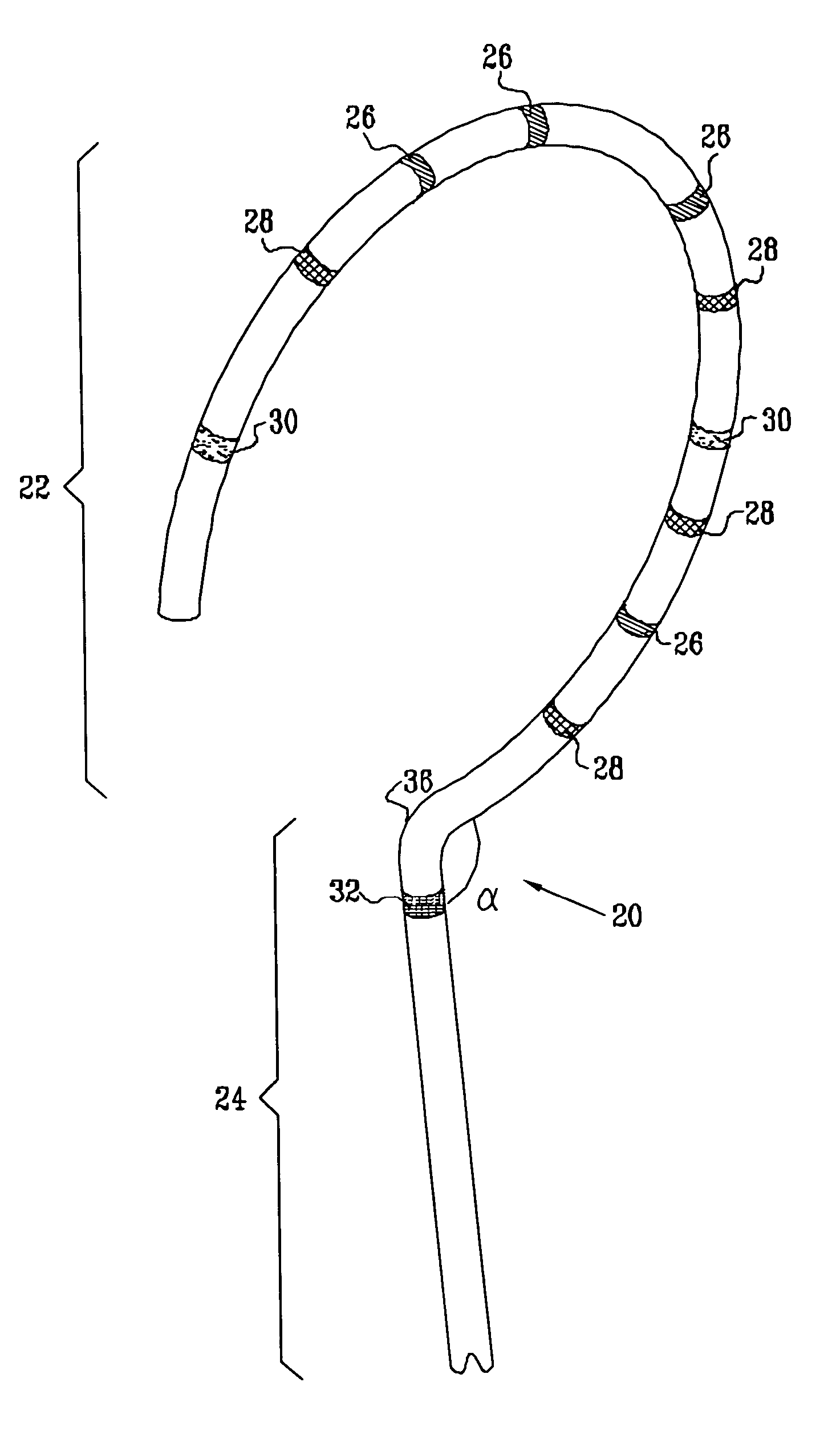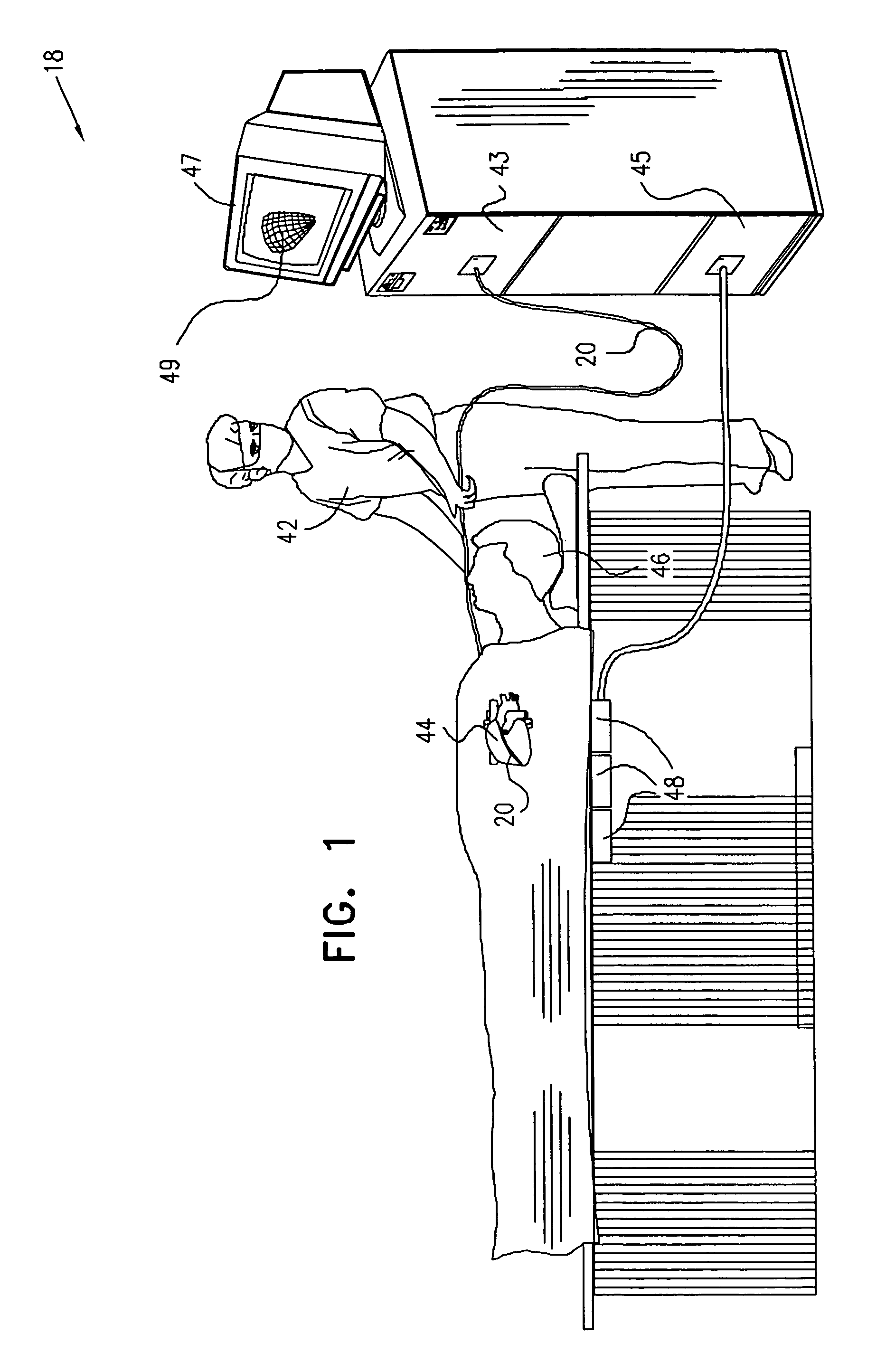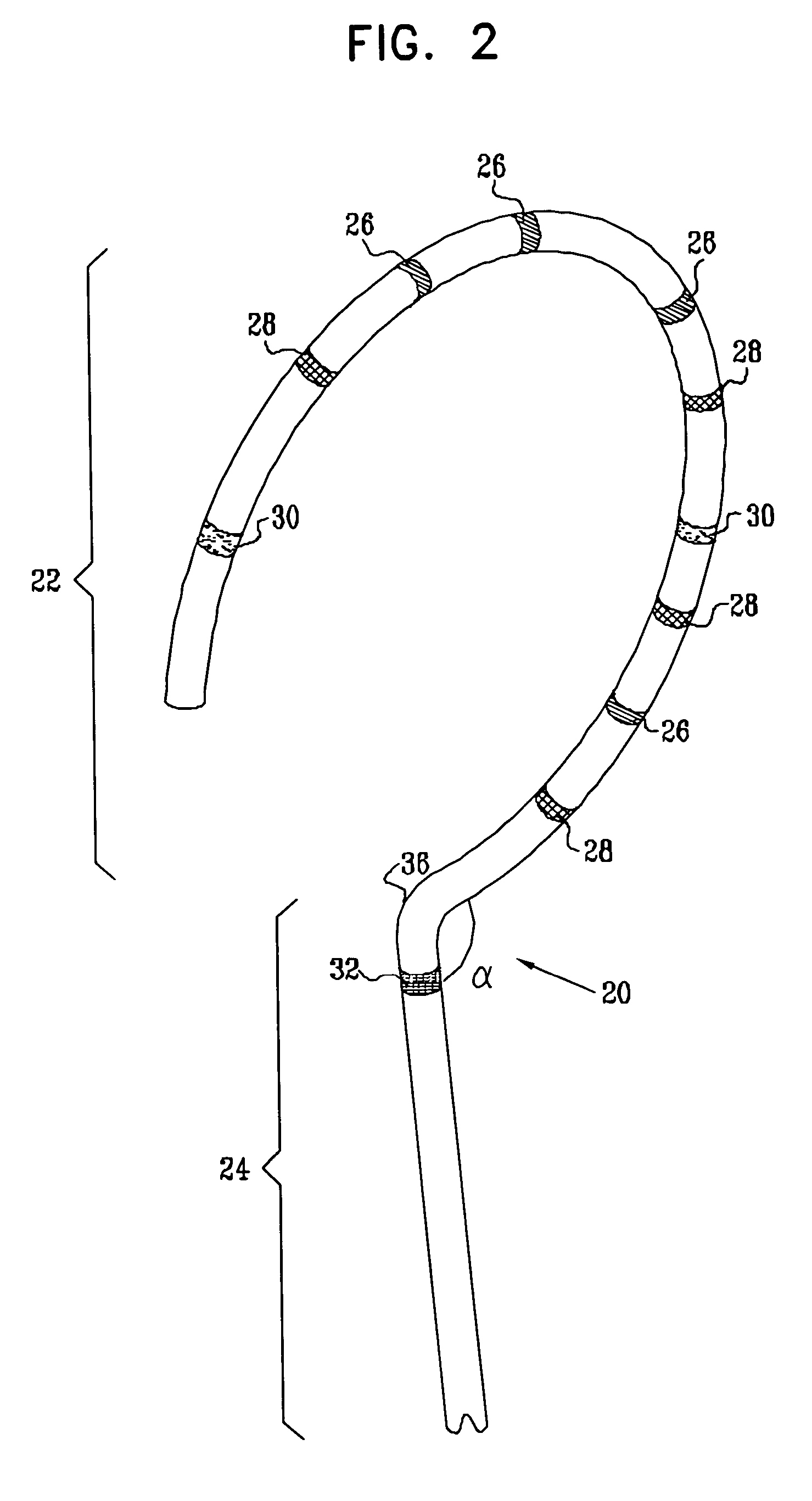Lasso for pulmonary vein mapping and ablation
a technology of pulmonary veins and lassos, applied in the field of electrophysiological mapping of intracardiac sites, can solve the problems of asynchronous rhythm and disruption of normal cardiac cycle, and achieve the effect of increasing accuracy
- Summary
- Abstract
- Description
- Claims
- Application Information
AI Technical Summary
Benefits of technology
Problems solved by technology
Method used
Image
Examples
Embodiment Construction
[0072]FIG. 1 is a schematic, pictorial illustration of a mapping system 18, for mapping of electrical activity in a pulmonary vein of a heart 44 of a subject 46, in accordance with a preferred embodiment of the present invention. System 18 comprises a catheter 20, which is inserted by a user 42 through a vein or artery of the subject into a pulmonary vein of the heart. Preferably, system 18 further comprises a console 43.
[0073]FIG. 2 is a schematic, pictorial illustration showing a distal portion of catheter 20, for facilitating accurate electrophysiological mapping of a pulmonary vein (PV) in order to enable therapeutic ablation. Catheter 20 comprises a curved section 22 joined at a generally known or range-restricted angle alpha to a base section 24, at a joint 36. Joint 36 may define the point where two initially-separate members (sections 22 and 24) are joined, or, alternatively, the joint may define the point on catheter 20 where a single member is bent, so as to form base sect...
PUM
 Login to View More
Login to View More Abstract
Description
Claims
Application Information
 Login to View More
Login to View More - R&D
- Intellectual Property
- Life Sciences
- Materials
- Tech Scout
- Unparalleled Data Quality
- Higher Quality Content
- 60% Fewer Hallucinations
Browse by: Latest US Patents, China's latest patents, Technical Efficacy Thesaurus, Application Domain, Technology Topic, Popular Technical Reports.
© 2025 PatSnap. All rights reserved.Legal|Privacy policy|Modern Slavery Act Transparency Statement|Sitemap|About US| Contact US: help@patsnap.com



